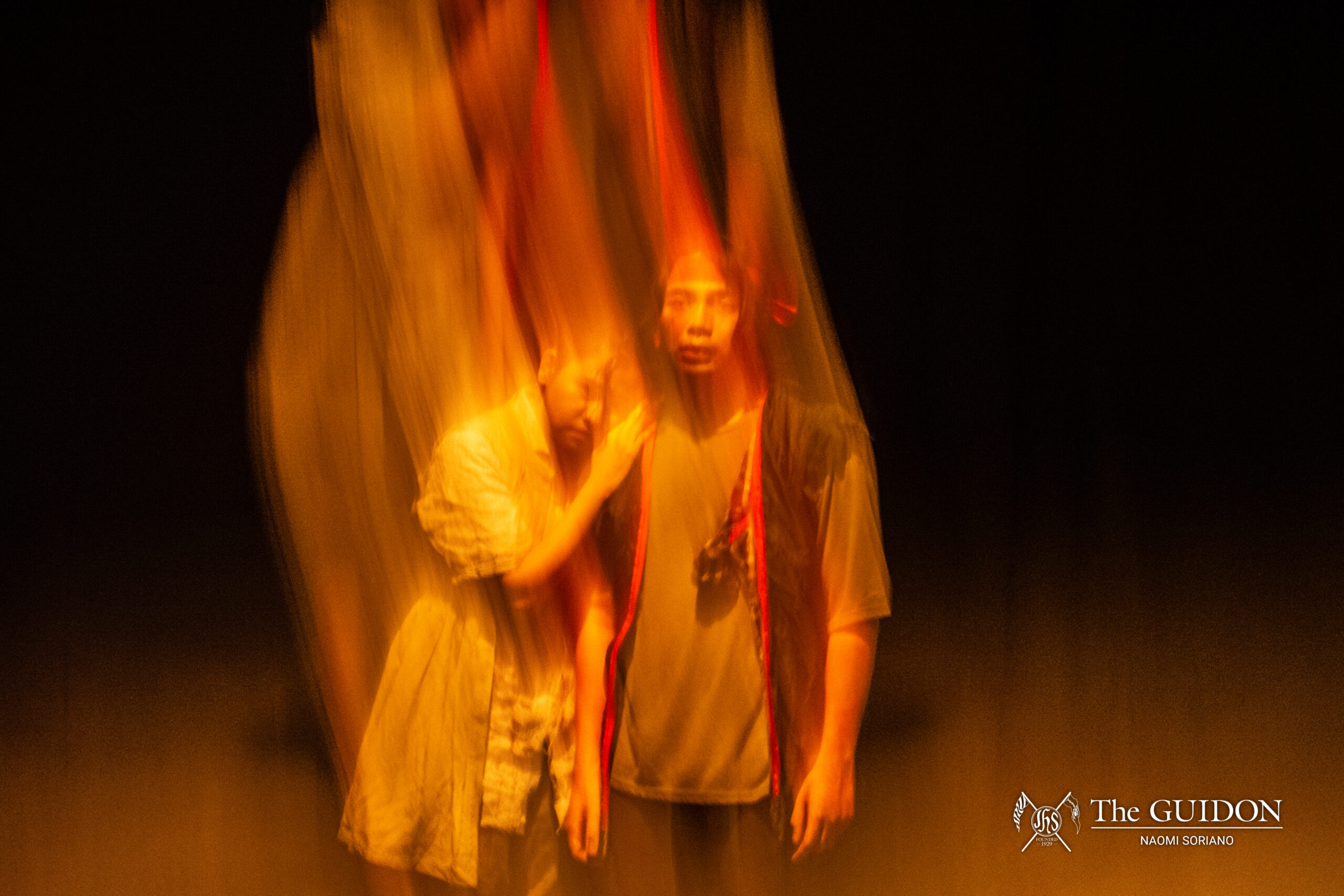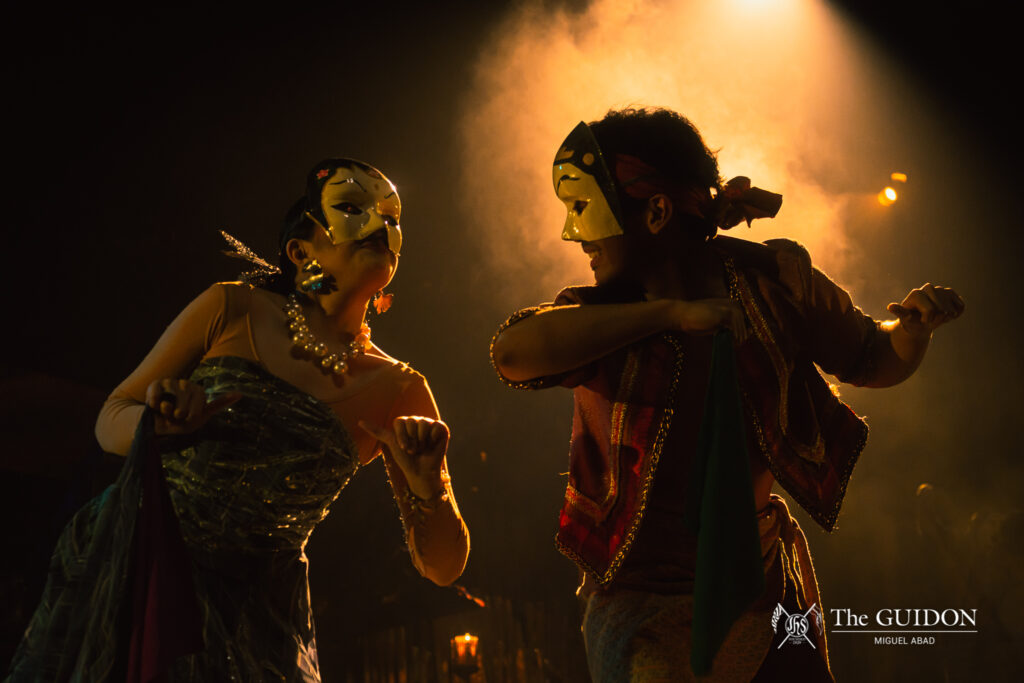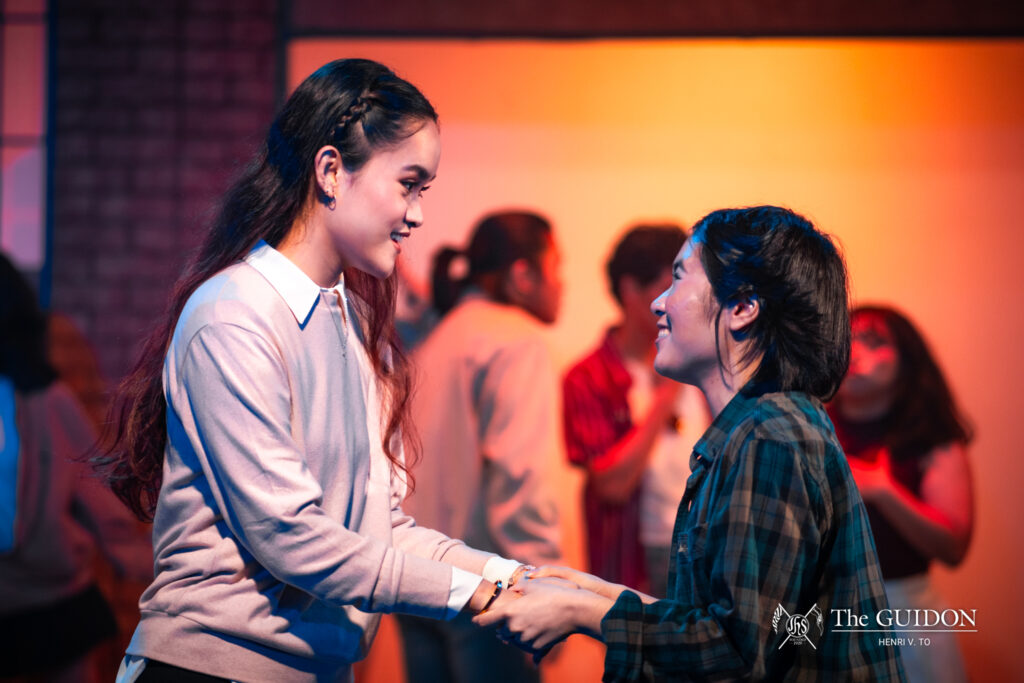TANGHALANG ATENEO (TA) started their 45th theater season off with Ardór, a play about Filipino love and revolution. Taking place in a dystopian Manila, Ardór at its core is about the anger that bubbles inside the hearts of the oppressed when they have suffered for far too long.
The story centers around Z (Yani Lopez and alternate Zoë de Ocampo), a young student activist, and Kali (Cholo Ledesma and alternate Teia Contreras), her seven-year-old cousin possessing messianic traits. Through the characters’ constant associations with in-story protests, Ardór shows the complexities of activism, eventually asking if the remedy to a broken society is its downfall.
With the story focusing on students and their fight against injustice, it is evident that the play’s writer and director, Guelan Varela Luarca, channeled feelings of anger from Filipino suffering. All the emotion that the pandemic brought, alongside the One Big Strike, served as inspiration for the production. While people may think that anger can be immature as a reaction, Luarca believes that such an emotion can be a catalyst for change.
Given Luarca’s intentional focus on rage, dramaturg Sabrina Basilio mentioned in an interview that the play was meant to provide a space for the Filipino’s bridled feelings of anger. They wanted to take the sentiment as it was from 2020 and bring it back to 2023 through the lens of this fictional world.
Developing these sentiments led to the original three-act script of the play being cut down to an hour and forty minutes play with no intermissions. The play ended up having a very concentrated shot of emotion that becomes overwhelming at times. From the background’s constant bustling sounds of the city to the stellar stage design with cement-like ramps and pillars, the production creates an atmosphere that feels like an inescapable concrete prison.
Set Designer D Cortezano alongside Set Head Karla Candelaria outdid themselves with the set, creating an incredible playground for the actors to perform. With the actors adding a sense of verticality by climbing the pillars, along with their use of the aisles for chase sequences, Luarca, Choreographer Jared Jonathan Luna, and the cast utilize the stage to their advantage. All of these aspects take space in the theater which pulls the audience in even more. Sound Designer Carlos Hombrebueno and Sounds Head Uriel Tibayan also make use of music and sounds in a manner that makes the play so sonically stunning.
Unfortunately, the production’s desire to focus on heavy emotions caused the playwrights to shorten the script. This major change ultimately made the story suffer. From loose plot threads to tonal imbalances, the story shown does not exactly live up to other aspects of the play.
There were moments in the production where the story would jump from one scene to the next. Some scenes got a loud laugh right before an extremely serious scene, causing emotional whiplash, making you question whether or not it was intentional. By the end, some questions are left unanswered and some loose threads leave you scratching your head.
Through Ardór, TA was able to combine all these different aspects in order to create some special moments for university theater that hopefully the Atenean community will remember for years to come. While it’s easy to boil the play down to the lackluster story aspects, it certainly shouldn’t be defined by that. When the art today tries to depict escapist dreams where one believes that nothing is wrong in the world, Ardór reminds you of wrath: your wrath that came from all the wrongs of an unjust system. The Filipino anger towards incompetence and injustice. The anger which seems to have lulled down when things have gone back to familiarity.
As Luarca said during an interview after the play, “[Anger] may not be everyone’s cup of tea, but maybe there’s space for it.” Ardór reminds you of the anger that you once had and the play wants you to remember. Ardór wants you to never forget that you can be angry.






